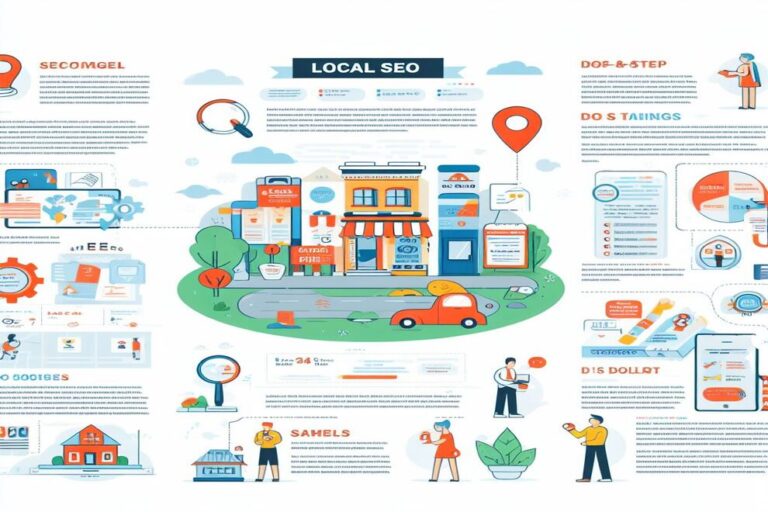Online Advertising: A Guide to Google Ads and Facebook Ads

In the digital age, online advertising has become a powerful tool for businesses to reach and engage their target audiences. Two of the most prominent platforms for online advertising are Google Ads and Facebook Ads. These advertising platforms offer unique features, targeting options, and advantages that can help you achieve your marketing goals. In this comprehensive guide, we will explore Google Ads and Facebook Ads, providing insights, strategies, and best practices to help you make informed decisions and drive success in your online advertising campaigns.
The Significance of Online Advertising
1. Global Reach
Online advertising allows businesses to reach a global audience. With the internet’s wide penetration, you can connect with potential customers worldwide.
2. Targeted Advertising
Online advertising platforms offer sophisticated targeting options. You can reach specific demographics, interests, and behaviors, ensuring your message resonates with the right audience.
3. Cost-Effective
Compared to traditional advertising, online advertising can be cost-effective. You have control over your budget and can measure the return on investment (ROI) more accurately.
4. Real-Time Data
Online advertising provides real-time data and insights. You can monitor the performance of your campaigns and make adjustments on the fly to optimize results.
5. Diverse Ad Formats
Online advertising supports various ad formats, including text, display, video, and social media ads. This diversity allows you to choose the most suitable format for your campaign objectives.
Google Ads: A Comprehensive Overview
1. Search Advertising
Google Ads primarily offers search advertising, where your ads appear in search engine results when users search for specific keywords. These ads are text-based and commonly seen at the top or bottom of the search results page.
2. Display Advertising
Google’s Display Network allows you to place visual ads on a wide range of websites, apps, and platforms within Google’s network. Display ads can include images, videos, and interactive elements.
3. Video Advertising
Google Ads provides options for video advertising through YouTube. You can create and promote video ads to target specific audiences on YouTube and across the web.
4. Shopping Advertising
For eCommerce businesses, Google Shopping Ads allow you to showcase your products directly in search results, featuring images, prices, and product details.
5. Remarketing
Google Ads enables you to retarget users who have previously visited your website or engaged with your content. Remarketing helps re-engage potential customers and drive conversions.
6. Local Advertising
Local businesses can leverage Google Ads to target users in their vicinity. Local ads display essential business information, such as location, hours, and contact details.
7. Bidding and Budgeting
Google Ads offers flexible bidding options, including cost-per-click (CPC), cost-per-thousand impressions (CPM), and cost-per-acquisition (CPA). You can set daily budgets to control your spending.
Key Strategies for Google Ads
1. Keyword Research
Conduct thorough keyword research to identify the terms and phrases your target audience uses when searching for your products or services. Use relevant keywords in your ad campaigns.
2. Ad Copy Optimization
Craft compelling ad copy that captures the essence of your offerings and entices users to click. Use action-oriented language and highlight unique selling points.
3. Landing Page Quality
Ensure that the landing page users reach after clicking your ads provides a seamless and relevant experience. The landing page should match the ad’s intent and offer a clear call to action.
4. A/B Testing
Regularly test different ad variations to discover what resonates most with your audience. Experiment with headlines, ad copy, and visuals to optimize performance.
5. Conversion Tracking
Implement conversion tracking to measure the success of your campaigns. Define what constitutes a conversion, whether it’s a sale, lead form submission, or other desired action.
Facebook Ads: A Comprehensive Overview
1. Ad Types
Facebook Ads offer various ad formats, including image and video ads, carousel ads (multiple images or videos in a single ad), slideshow ads, and canvas ads for immersive experiences.
2. Audience Targeting
One of Facebook Ads’ strengths is its audience targeting capabilities. You can create highly specific audience segments based on demographics, interests, behaviors, and more.
3. Placement Options
Facebook Ads can appear on the Facebook platform, Instagram, Audience Network (ads on external websites and apps), and Messenger. You can choose where your ads are displayed.
4. Lead Generation Ads
Facebook offers lead generation ads that allow users to submit their contact information directly through the ad without leaving the platform.
5. Engagement Ads
You can create ads specifically to increase engagement, such as page likes, event responses, and post engagement.
6. App Install Ads
For businesses with mobile apps, Facebook offers app install ads to drive downloads and installations.
7. Video Views
Facebook is a prominent platform for video marketing. Video ads can help you showcase your brand, products, or services in a dynamic way.
8. Messenger Ads
You can use Facebook Messenger to run ads that encourage conversations with potential customers.
9. Dynamic Ads
For eCommerce businesses, dynamic ads automatically show the right products to people who have expressed interest on your website, app, or elsewhere on the internet.
Key Strategies for Facebook Ads
1. Audience Segmentation
Leverage Facebook’s audience segmentation capabilities to create highly targeted campaigns. Define your ideal customer personas and adjust your ad content accordingly.
2. Compelling Visuals
Visual content is key on Facebook. Use eye-catching images or videos that resonate with your audience and fit the ad format.
3. Ad Scheduling
Determine the best times to display your ads based on your audience’s online behavior. You can schedule ads to run during specific hours or days.
4. A/B Testing
Experiment with different ad variations to optimize performance. Test headlines, ad copy, visuals, and calls to action to find the winning combinations.
5. Budget Allocation
Distribute your budget effectively among different campaigns. Allocate more resources to campaigns that are performing well and adjust as needed.
6. Remarketing
Utilize Facebook’s retargeting capabilities to engage users who have visited your website or interacted with your content.
Comparing Google Ads and Facebook Ads
To make an informed decision between Google Ads and Facebook Ads, consider the following factors:
1. Advertising Goals
Google Ads are ideal for users actively searching for products or services, making them suitable for businesses with clear purchase intent. Facebook Ads are better for brand awareness, engagement, and reaching specific demographics.
2. Targeting Options
Facebook Ads offer precise audience targeting based on demographics, interests, and behaviors. Google Ads rely on keywords and intent-based targeting.
3. Ad Format
Google Ads primarily feature text-based search ads but also support display and video. Facebook Ads offer a wide range of visual ad formats, making them effective for creative campaigns.
4. Budget Flexibility
Both platforms offer budget flexibility, but Google Ads may be more cost-effective for competitive keywords. Facebook Ads can be more budget-friendly for reaching broader audiences.
5. Campaign Objectives
Consider your campaign objectives. If you aim to generate leads, promote brand awareness, or engage users, Facebook Ads may be more suitable. If you want to capture high-intent search traffic, Google Ads may be the better choice.
6. Audience Behavior
Think about your audience’s behavior. Google Ads reach users actively searching for information, while Facebook Ads rely on users’ interests and online behavior.
7. Testing and Iteration
Both platforms support A/B testing and performance optimization, but the testing process and metrics differ. Choose the platform that aligns with your testing and iteration strategy.
Measuring Success in Online Advertising
To evaluate the success of your online advertising campaigns, track and analyze key performance indicators (KPIs):
1. Click-Through Rate (CTR)
CTR measures how many people click on your ads compared to the number of times the ad is shown. A high CTR indicates ad relevance and engagement.
2. Conversion Rate
Monitor the conversion rate, which measures the percentage of users who take a desired action after clicking your ad, such as making a purchase or filling out a form.
3. Return on Investment (ROI)
Calculate the ROI by comparing the revenue generated from your ads to the cost of the ad campaign. A positive ROI indicates a successful campaign.
4. Quality Score (Google Ads)
Google Ads assign a Quality Score to your ads based on factors like ad relevance, landing page quality, and click-through rate. A higher Quality Score can lead to lower ad costs and better ad positions.
5. Engagement Metrics
For Facebook Ads, track engagement metrics like post likes, shares, comments, and video views. High engagement indicates effective content.
6. Ad Position
In Google Ads, analyze your ad’s average position in search results. Higher positions often result in more clicks and visibility.
7. Cost per Click (CPC)
Monitor the cost per click to ensure you’re staying within your budget and optimizing ad spend.
Conclusion
Online advertising on platforms like Google Ads and Facebook Ads offers powerful tools for businesses to reach, engage, and convert their target audiences. By understanding the unique features and capabilities of these platforms, you can tailor your advertising strategies to achieve specific objectives. Whether you aim to capture high-intent search traffic or create engaging visual campaigns, online advertising provides the flexibility and reach needed to drive success in the digital landscape. Keep in mind that continuous monitoring, testing, and optimization are essential for maximizing the effectiveness of your online advertising efforts.





